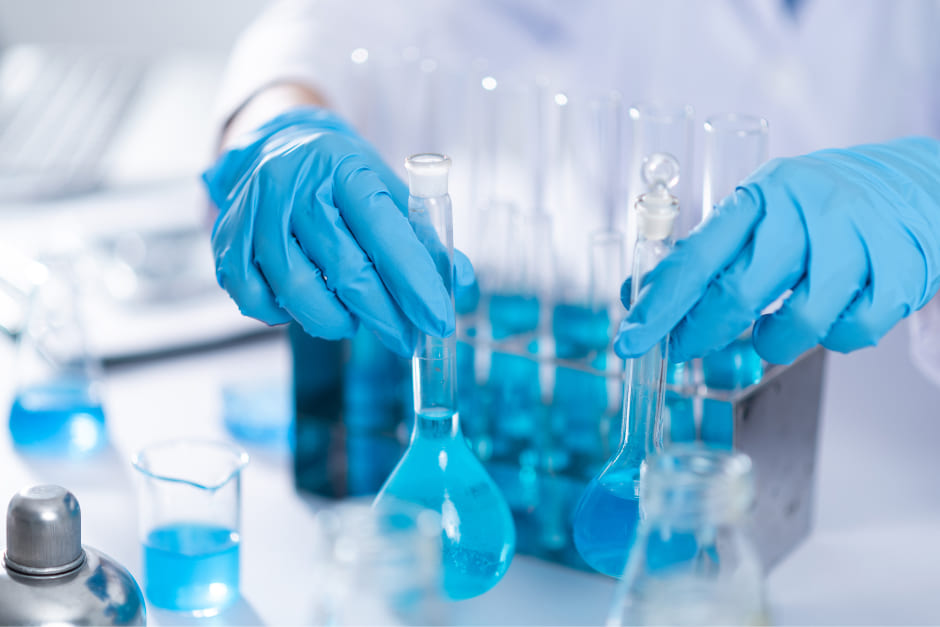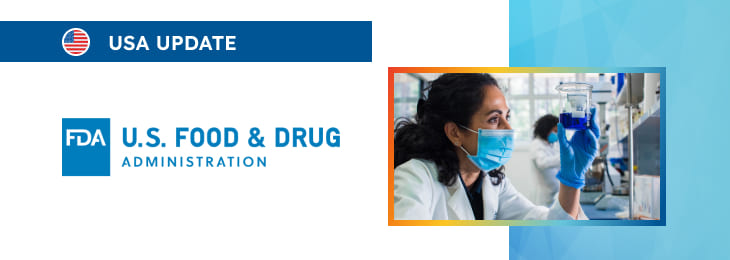The new article highlights the key aspects related to the way test articles should be extracted in order to ensure the accuracy and reliability of further assessment.

Table of content
The Food and Drug Administration (FDA or the Agency), the US regulating authority in the sphere of healthcare products, has published a draft guidance document dedicated to chemical analysis for biocompatibility assessment of medical devices. Once finalized, the guidance will provide an overview of the applicable regulatory requirements, as well as additional clarifications and recommendations to be taken into consideration by medical device manufacturers and other parties involved in order to ensure compliance.
At the same time, provisions of the guidance are non-binding in their legal nature, nor are they intended to introduce new rules or impose new obligations. Moreover, the authority explicitly states that an alternative approach could be applied, provided such an approach is in line with the underlying legislation and has been agreed with the authority in advance.
Extract
First of all, the authority states that the conditions used for extracting test articles should be carefully chosen to obtain the worst-case estimates of the quantities of potential chemical analytes that tissues might be exposed to during device use. The rationale for the selection of these extraction conditions should address both the duration of exposure and the type of tissue contact.
ISO 10993-18, particularly Table 2, serves as a guide for the recommended extraction approaches. These include performing extractions using solvents of varying polarities (e.g., polar, semi-polar, and non-polar) to ensure a comprehensive assessment of potential extractables.
According to the guidance, in order to comprehensively describe a device, detailed information should be provided to highlight potential extractables, which are chemicals that might leach out of the device materials during usage. Such data are crucial for understanding the rationale behind chemical characterization studies.
Recommendations on gathering this information can be referenced in Appendix A of the full document issued by the FDA.

Optimal Extraction Techniques
As further explained in the document, the extraction should be conducted in sealed containers with minimal dead space (i.e., reduced empty space above the solvent and the test article) to prevent evaporative loss and to maintain controlled temperature conditions. Continuous mechanical agitation is also advised during the extraction process, as it aids in achieving chemical equilibrium and ensures uniform exposure of the test article to the solvent.
In summary, extraction conditions must be tailored to produce a worst-case exposure estimate, using different solvents and controlled environmental factors, to yield accurate and meaningful results.
Number of Extraction Replicates
For reliable results, it is recommended to perform extractions in triplicate for each solvent used, unless otherwise justified. The data from each extraction should be analyzed independently.
Triplicate extractions are important for several reasons:
- Statistical Comparisons: To support a statistical analysis that can be used to demonstrate chemical equivalency, particularly when comparing the material composition of a modified device to a previously tested version.
- Variability Assessment: For devices prone to variability (e.g., those with slight chemistry changes during manufacturing or over shelf life), conducting triplicates ensures that the chemical profile is representative of possible real-world scenarios.
- Engineering Variations: When engineering testing or other data suggest potential variability between product lots, multiple replicates provide additional assurance of consistency.
For devices that are very small or have limited surface areas, pooling multiple devices together for extraction might be necessary to produce adequate extract volume for analysis. However, pooling should be approached cautiously, especially if there is evidence of variability, as it may obscure device-specific variations.
Reporting and Data Interpretation
When reporting the results, the identity and quantity of extractables from each replicate should be presented separately.
The highest amount detected in any single replicate should be considered the worst-case estimate, rather than averaging the values from all replicates. This conservative approach ensures that potential risks are not underestimated.
Extraction Volume
The volume of solvent used for extraction should be minimized and justified based on established standards and the sensitivity requirements of the analytical methods. For example, extraction ratios similar to those in ISO 10993-12 should be considered, provided that the solvent is not overly diluted, which could lead to limits of quantification (LOQ) being lower than the Analytical Evaluation Threshold (AET).
Considerations for Adequate Extraction
The test article should be fully submerged in the solvent, with attention paid to solvent uptake and any potential swelling of the device material. Significant swelling may reduce the volume of available solvent, which in turn could affect the concentration of extractables.
If solvent loss occurs, adding more solvent post-extraction should be avoided, as it could alter the concentration of extractables and lead to misleading results.
Extraction Temperature and Time
The temperature and duration of the extraction should be chosen to represent a worst-case exposure scenario. Factors to consider include the thermal properties of the materials (e.g., glass transition temperature, melting point, degradation temperature), as well as the intended clinical use of the device.
Guidelines for Setting Extraction Conditions
Exaggerated extraction conditions – using temperatures and durations higher than what the device would experience during clinical use – are often recommended to account for potential chemical leaching over extended periods. For exhaustive extractions, it is crucial to ensure that all extraction cycles have consistent durations, as using different cycle lengths can complicate the determination of when exhaustive extraction is complete.
Visible changes to the device observed during or after extraction (e.g., swelling, deformation) should be investigated. Such changes might indicate thermal damage or solvent incompatibility, which could alter the extractable profile.
In these cases, a justification should be provided to explain why these changes do not compromise the accuracy of the extraction results. If performing extractions at clinical use temperatures (e.g., 37°C), a justification should be provided for the selected temperature, particularly if higher temperatures would cause degradation or damage to the device materials.
Particulates
As explained by the FDA, if particles are detected in the test extracts, a thorough analysis should be performed to determine their origin, chemical composition, and potential for exposure to tissues. If these particulates are artifacts of sample preparation, steps should be taken to ensure they do not interfere with subsequent chemical analysis.
Any particulate removal processes (e.g., filtration, centrifugation) should be justified to confirm they do not alter the extractables profile.
Addressing Clinical Relevance
If particulates are shown to be generated during normal device use, additional data should be provided to evaluate their potential clinical impact. Identifying the source (e.g., manufacturing processes or changes in device stability) and addressing any safety concerns are necessary to ensure that particulates do not pose a risk to patients.
Additional Considerations for Exhaustive Extraction
The document also outlines additional considerations to be taken into account by the parties involved, including:
- Determining the Endpoint of Exhaustive Extraction. The endpoint of an exhaustive extraction can be determined using Non-Volatile Residue (NVR) analysis. NVR analysis provides an estimate of the amount of non-volatile and some semi-volatile extractables remaining in the device after extraction. This analysis can help confirm that the extraction has reached a point where no further significant amounts of extractables can be obtained. If using NVR, additional considerations detailed in Appendix B of the document should be reviewed to ensure accurate determination of the exhaustive endpoint.
- Combining/Pooling Extracts. Chemical analyses do not need to be performed separately for each extraction cycle. Instead, sequential extractions can be combined into a single pool, and the total combined volume can be used for calculating the AET (Analytical Evaluation Threshold) and for subsequent chemical analyses, as described in ISO 10993-18. This approach reduces analytical complexity while still providing comprehensive data for safety assessments.
Conclusion
In summary, the selection of extraction conditions, the number of replicates, and the handling of particulates should be carefully planned and justified. The goal is to ensure that all potential extractables are thoroughly characterized, providing a robust basis for determining the device’s biocompatibility and safety.
How Can RegDesk Help?
RegDesk is an AI-powered Regulatory Information Management System that provides medical device companies with regulatory intelligence for over 120 markets worldwide. It can help you prepare and publish global applications, manage standards, run change assessments, and obtain real-time alerts on regulatory changes through a centralized platform. Global expansion has never been this simple.

